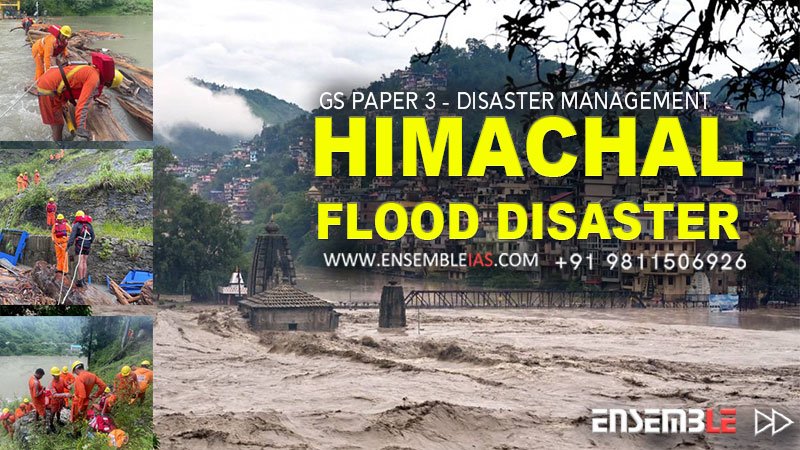Himachal Flood Disaster
The Himalayas and India’s coastal regions will be the hardest damaged by climate change, according to the IPCC VI Report (Intergovernmental Panel on Climate Change). There is a discernible pattern of greater precipitation occurring at shorter times in the Himalayas. Anthropogenic factors have greatly contributed to the disaster in addition to climate change.
The link to join the course : Online Courses
Issues
- Development grew heavily centered on the exploitation of natural resources, such as forests, water, tourism, and cement manufacture.
- Due to this, hydropower projects were built quickly, frequently resulting in harm to rivers and their ecosystems, roads were widened without conducting adequate geological and engineering analyses, cement plant expansions changed how land was used, and agricultural practices were changed to focus on cash crops, which had an impact on the environment and river systems.
- The haphazard development of these hydropower facilities, which have basically reduced mountain rivers to minor streams, is one of the main causes of the disastrous effects of floods in the area.
- The technology used is referred to as “run of the river” dams, and it diverts water through tunnels dug into the mountains. The excavated debris (muck) is frequently dumped along the riverbeds.
- The water returns to the river during times of heavier precipitation or cloudbursts, carrying the dumped muck with it. Other other small hydropower dams and rivers including the Parvati, Beas, and Sutlej also exhibit this harmful process.
- Large-scale cement plant construction and widespread mountain-chopping in regions like Bilaspur, Solan, and Chamba have led to severe land use changes that exacerbate flash floods during rainy seasons. The natural environment is changed by cement plants, and the loss of vegetation lowers the soil’s ability to absorb water.
- Roads are being built rapidly without taking necessary land cutting and gradient requirements into account. Modern excavators are used in construction, but no suitable drains or designated muck disposal locations are made. As a result, when it rains, the water follows its own course and deposits the spilled muck into the river ecology.
Solution
To involve the key players, the people, and to debate both the shortcomings of the policy framework and the oddities of the initiatives undertaken, a commission of inquiry must be established.
To give local communities more control over their resources, a new architecture is needed. If the assets are insured and the custodians are local communities, it will be possible to compensate for damages suffered by culverts, village drains, minor bridges, schools, and other social infrastructure.
Best Online Coaching for Civil Service_IAS_ UPSC_IFS_IPS
Free Study Material ENSEMBLE IAS ACADEMY | Call +91 98115 06926 | Visit us:- https://ensembleias.com/ | Online Store: https://online.ensemble.net.in/
#GS3 #GSPaper3 #DM #Disaster_Management #Flash_Floods #Himachal #IPCC #Gegraphymadeeasy #geographymadesimple #bestcoachingclassesofgeography #thegreatestgeographerofIndia #bestteacherofgeography #mostresultorientedclasses #iassimplified #civilservicesstudy #ensembleiasacademy #geographyoptional #k_siddharthasir #strategicthinker #ias #civilservices #upsc_motivation #upsc_aspirants #upsc_exam #trendsingeography #trendofquestions #geographytrends




